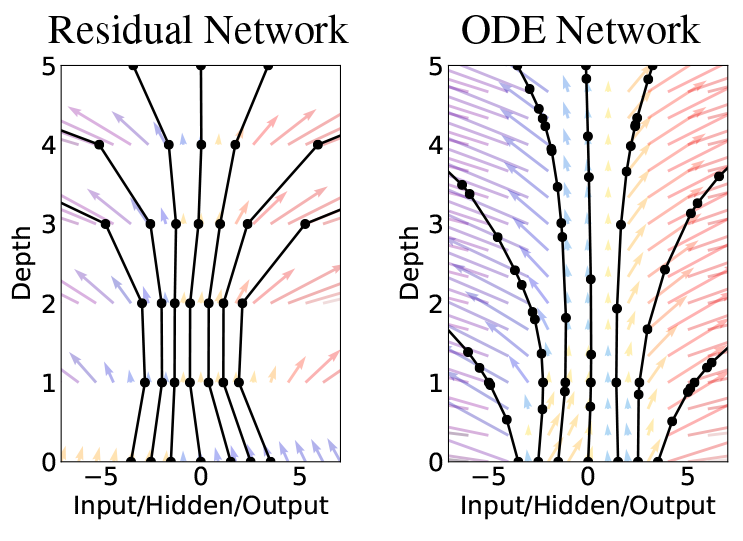Deep Neural Networks and Partial Differential Equations: Approximation Theory and Structural Properties Philipp Petersen, University of Oxford
https://memento.epfl.ch/event/a-theoretical-analysis-of-machine-learning-and-par/
- http://at.yorku.ca/c/b/p/g/30.htm
- https://mat.univie.ac.at/~grohs/
- https://skymind.ai/ebook/Skymind_The_Math_Behind_Neural_Networks.pdf
- http://cmsa.fas.harvard.edu/geometric-analysis-ai/
- https://github.com/markovmodel/deeptime
- https://omar-florez.github.io/scratch_mlp/
- https://joanbruna.github.io/MathsDL-spring19/
- https://github.com/isikdogan/deep_learning_tutorials
- https://www.brown.edu/research/projects/crunch/machine-learning-x-seminars
- Deep Learning: Theory & Practice
- https://www.math.ias.edu/wtdl
- https://www.ml.tu-berlin.de/menue/mitglieder/klaus-robert_mueller/
- https://www-m15.ma.tum.de/Allgemeines/MathFounNN
- https://www.math.purdue.edu/~buzzard/MA598-Spring2019/index.shtml
- http://mathematics-in-europe.eu/?p=801
- Discrete Mathematics of Neural Networks: Selected Topics
- https://cims.nyu.edu/~bruna/
- https://www.math.ias.edu/wtdl
- https://www.pims.math.ca/scientific-event/190722-pcssdlcm
- Deep Learning for Image Analysis EMBL COURSE
- http://voigtlaender.xyz/
- http://www.mit.edu/~9.520/fall19/
[angewandtefunktionalanalysis]
- https://www.math.ucla.edu/applied/cam
- numerical methods for deep learning
- http://www.mathcs.emory.edu/~lruthot/
- Automatic Differentiation of Parallelised Convolutional Neural Networks - Lessons from Adjoint PDE Solvers
- https://raoyongming.github.io/000000000000000000000000
- https://dionisos.wp.imt.fr/
- https://ir.library.louisville.edu/cgi/viewcontent.cgi?article=2227&context=etd
- https://papers.nips.cc/paper/6857-nonlinear-random-matrix-theory-for-deep-learning.pdf
- https://web.stanford.edu/~yplu/DynamicOCNN.pdf
- https://zhuanlan.zhihu.com/p/71747175
- https://web.stanford.edu/~yplu/
- https://web.stanford.edu/~yplu/project.html
- A Flexible Optimal Control Framework for Efficient Training of Deep Neural Networks
- NEURAL NETWORKS AS ORDINARY DIFFERENTIAL EQUATIONS
- BRIDGING DEEP NEURAL NETWORKS AND DIFFERENTIAL EQUATIONS FOR IMAGE ANALYSIS AND BEYOND
- Deep learning for universal linear embeddings of nonlinear dynamics
- Exact solutions to the nonlinear dynamics of learning in deep linear neural networks
- Neural Ordinary Differential Equations
- NeuPDE: Neural Network Based Ordinary and Partial Differential Equations for Modeling Time-Dependent Data
- Neural Ordinary Differential Equations and Adversarial Attacks
- Neural Dynamics and Computation Lab
- https://deeplearning-math.github.io/
- https://arxiv.org/abs/1901.02220
- http://helper.ipam.ucla.edu/publications/dlt2018/dlt2018_14936.pdf
- https://www.math.tu-berlin.de/fileadmin/i26_fg-kutyniok/Petersen/DGD_Approximation_Theory.pdf
- https://arxiv.org/abs/1804.04272
- https://deepai.org/machine-learning/researcher/weinan-e
- https://deepxde.readthedocs.io/en/latest/
- https://github.com/IBM/pde-deep-learning
- https://github.com/ZichaoLong/PDE-Net
- https://github.com/amkatrutsa/DeepPDE
- https://github.com/maziarraissi/DeepHPMs
- https://maziarraissi.github.io/DeepHPMs/
- DGM: A deep learning algorithm for solving partial differential equations
- A Theoretical Analysis of Deep Neural Networks and Parametric PDEs
- NeuralNetDiffEq.jl: A Neural Network solver for ODEs
https://arxiv.org/abs/1806.07366 https://rkevingibson.github.io/blog/neural-networks-as-ordinary-differential-equations/
